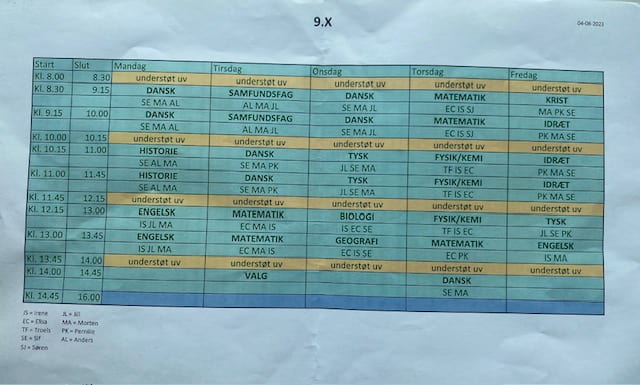A safe space and the importance of choice
Alice Kazakov
For over 20 years SkolenSputnik has been providing kids with learning disabilities with a special place to learn and grow.
Gentofte, located in a small, redesigned office space in the suburbs of Copenhagen, is just one of seven campuses dedicated to special education and social development. Here, students with acute autism or anxiety issues work in small groups to learn both curriculum and how to recognize and regulate their emotions.
The education the students receive is based on a triangle of needs and desired outcomes. Students must learn the curriculum required by every kommune, crucial social skills for when they leave the school, and of course, how to understand and process their special needs for the future. Everything the students do encompasses these three elements through the help of teachers and psychologists, whether the students realize it or not.

Headmaster Søren Juul Jensen stresses that since the students are mentally vulnerable, the school focuses on giving them the power of choice. If for example the student can’t handle learning in a group setting that day, or the math is getting too overwhelming, they can choose to do something else like reading/playing alone or working on another subject in one of the school’s small sensory rooms.

“We also follow the guidelines in the Folkeskole Act,” Jensen says, “by law we are required to mold the teaching around the student. The Folkeskole Act, according to the European Agency for Special Needs and Inclusive Education, says schools are required “to help promote each individual pupil’s personal and social development according to their capability. Working methods are modified towards the pupil’s attainment of greater self-reliance and maturity. This aspect of pedagogic policy requires close co-operation between school and home, and an on-going dialogue is sought among teachers, parents and pupils.”
4 Steps to Skollen Sputnik
It’s important to note that although a private school, Skolen Sputnik receives 100% of their funding and support from the Kobenhavns Kommune or the local city government. However in order to enroll a student into these schools and receive free special education, parents and their children must follow what visitation and school consultant Lars Wagner explains as the “steps and pathway to a special education school.”
“We are like the last station, with the more treatment part, the more psychological part, to help the kids get some strategies to understanding and dealing with autism….”

Once the students have received the coping mechanisms they need or have tested out of certain subjects, they can be placed back into the public school system or move onto bigger special education schools. The cycle can be repeated if the students need additional support.
Pressure
For some, the process can be a long one as the specific needs of the student are evaluated through each step. It can be frustrating for the parents, according to Wagner. Some parents and teachers can immediately recognize if a child needs to be put in special education, but in order to receive the full benefits and support from the kommune, they need to spend time at each step.
“There’s a certain pressure to “fix” the child enough at each step so they get the help they need,” says Wanger.
Not only that, but there is pressure on the school as well. Each year, the school is evaluated for how much support they may need until they can make an arraignment with the kommune. Each agreement is based on a set of education and performance standards that are required by the kommune. If the special education school fails to aid the student enough for them to be able to return to the public school system, the amount of aid and funding goes down.
It creates a vicious cycle because if the amount of funding goes down, so does the staff and resources available to student development, and so it continues. It is a delicate relationship, but special education schools would not exist without the funding from the kommune and the work of a specialized community.
Importance
Ultimately, the students attending special education schools in the Copenhagen area receive all the resources and help that they need to learn and develop.
“I’ve been with the kids for 20 years now,” Wagner explains. “First I was a teacher, then the principal of a couple schools and now I’m more in the administration and visitation side of things. What we do here is very special. Especially at the final graduation, when we go over everyone’s progress and accomplishments, and everyone is crying.”
“Together we are strong, or so someone says,” Wagner says with a smile, “I think it’s very true for us too.”
In the future Skolen Sputnik plans to consolidate their three center campuses into one bigger school to allow for more collaboration between both teachers and students.



This article is intended for an audience in the United States, specifically parents.